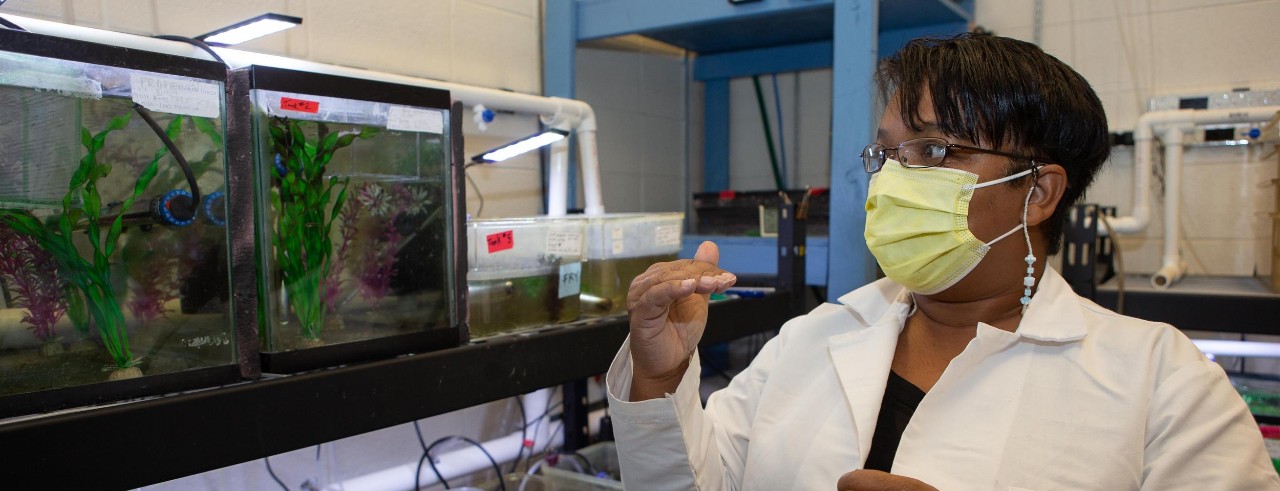
Dispatch: Plant must find safer solution for coal ash
UC toxicologist explains risks associated with coal ash
The Columbus Dispatch turned to a University of Cincinnati aquatic toxicologist to explain the health risks associated with coal ash produced by power plants.
According to the Dispatch, the Environmental Protection Agency ruled that an Ohio power plant may not continue to dispose of waste coal ash in an unlined pond.

UC toxicologist Latonya Jackson is an assistant professor in UC's College of Arts and Sciences. Photo/Andrew Higley/UC Marketing + Brand
The John M. Gavin plant along the Ohio River burns coal to produce 2,600 megawatts of electricity for customers in southwest Ohio. But the plant is one of the biggest generators of greenhouse gas emissions among power plants in the United States.
According to the Dispatch, workers exposed to coal ash are more likely to be diagnosed with respiratory diseases such as COPD.
UC assistant professor Latonya Jackson told the Dispatch that coal ash contains toxins such as mercury and cadmium.
"It's in trace levels, but it's there," said Jackson, who studies aquatic toxicology in UC's College of Arts and Sciences. "I would hope that it would get regulated because it does pose a threat to human health."
In her lab, Jackson studies the long-term impacts of toxins on the growth, development and health of fish and other aquatic organisms.
The EPA says coal ash that leaches into groundwater can get into sources of drinking water.
Read the Columbus Dispatch story.
Featured image at top: UC assistant professor Latonya Jackson works with students in her biology lab. Photo/Andrew Higley/UC Marketing + Brand
Related Stories
UC‘s College of Arts and Sciences taps innovative new leadership
December 20, 2023
The College of Arts and Sciences announced Ryan J. White and Rina Williams as the newest divisional deans of Natural Sciences and Social Sciences. White and Kennedy’s inclusion will bring new focuses and structure around student success and the college of Arts and Sciences’ advancement. Both will officially begin their new terms on Jan. 1, 2024.
What is UC’s 4 + 1 program?
December 4, 2023
You may be a UC student thinking about taking your education to the next level — UC’s College of Arts and Sciences has a pathway to help you do just that. A&S has no fewer than 15 five-year programs — from biological sciences to Spanish to psychology — where you can earn both your bachelor’s and master’s degrees in just five years, versus the traditional six-year track. The Bachelors and Master’s 4 + 1 Program is designed to increase your marketability and deepen your understanding of the subject matter. And in an increasingly competitive job market, you may want to investigate an additional year of study.
Clifton Court Hall grand opening garners detailed media coverage
September 20, 2023
The University of Cincinnati celebrated the opening of Clifton Court Hall on Tuesday, Sept. 19, with a ribbon cutting, attended by approximately 200 administrators, faculty, staff and students. The event was covered by multiple media outlets.
